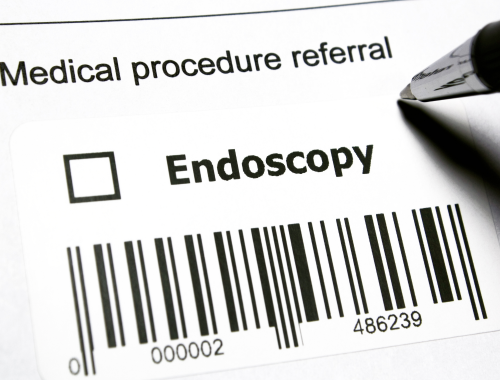Difference Between Gastritis Endoscopy and Normal
Ever felt a severe pain in the tummy or the feeling of fullness in the stomach? These can possibly be the signs of gastritis. It is a medical condition that comes on suddenly or gradually, and can be caused by many factors such as excessive alcohol consumption, long-term use of non-steroidal anti-inflammatory drugs (NSAIDs), infection with Helicobacter pylori bacteria, or stress. Gastritis is inflammation or swelling of the lining of the stomach. Depending on the symptoms and the condition of the individual, there are several methods that can be used to diagnose gastritis, including endoscopy. Gastritis endoscopy is considered an effective and safe procedure to diagnose gastritis and other digestive conditions.

Gastritis Endoscopy
It is one of the most effective procedures for diagnosing gastritis and other digestive conditions. It is performed by passing a flexible scope through the mouth and into the esophagus, stomach, and duodenum. The endoscope is a long, thin, flexible tube with a camera and light at the end. It allows the doctor to see the lining of the stomach in detail and take biopsies (small tissue samples) if necessary. During the endoscopy, the patient is under conscious sedation. The doctor uses the camera on the endoscope to look for any signs of inflammation, bleeding, or other abnormalities in the lining of the stomach. If any abnormalities are found, the tissue sample is taken for further analysis. It does not take more than 30 minutes and the patient can go home the same day or immediately after.

Normal Endoscopy
An endoscopy is a small non-surgical procedure used to look inside the body, particularly a person’s digestive tract. The doctor uses a flexible tube to look inside and examine the areas of interest. The camera sends images to a screen, and the doctor looks for signs of inflammation, ulcers, tumors, or other abnormalities. If no abnormalities are found, the results are considered normal. This means that the patient’s digestive system appears to be healthy and functioning properly. There are several different types of endoscopy, each designed to examine specific areas of the body, including upper endoscopy, colonoscopy, laparoscopy, bronchoscopy, and more.
Difference between Gastritis Endoscopy and Normal
Procedure
– Endoscopy is a medical procedure that allows doctors to visualize the inner lining of the digestive tract using a thin, flexible tube with a camera on the end. While a normal endoscopy means there are no abnormalities in the examined area, a gastritis endoscopy is used to diagnose inflammation of the stomach lining, known as gastritis. The doctor uses an endoscope to inspect and observe the digestive tract for any abnormalities.
Diagnosis
– Normal endoscopy is typically performed as part of routine screening or to investigate symptoms such as abdominal pain, diarrhea, or difficulty swallowing. The doctor looks for signs of inflammation, bleeding, ulcers, tumors, or other abnormalities. Gastritis endoscopy is performed to diagnose gastritis and other digestive conditions. Biopsies may be taken for further analysis to determine the underlying cause.
Normal vs. Gastritis Endoscopy: Comparison Chart

Summary
Endoscopy has rapidly advanced over the past few decades and has become an integral part of clinical gastroenterology. While a normal endoscopy examines the digestive tract for abnormalities or signs of disease, a gastritis endoscopy is performed specifically to diagnose inflammation of the stomach lining. During a gastritis endoscopy, the doctor examines the stomach lining for signs of inflammation and may take biopsies to confirm the diagnosis and determine the underlying cause. If you experience symptoms such as stomach pain, nausea, or vomiting, it is important to see a doctor for an evaluation and possible endoscopy to diagnose and treat any underlying conditions.
How does gastritis show up on endoscopy?
In mild cases, the stomach lining may appear reddened or swollen, with signs of inflammation. The specimens will show lots of acute inflammatory cells, mainly white blood cells. In severe cases, the inflammation may be more widespread and the lining of the stomach may appear thicker and more swollen.
Can gastritis be diagnosed without endoscopy?
Yes, gastritis can be diagnosed without endoscopy. Blood tests, stool tests, and breath tests can be used to detect the presence of Helicobacter pylori infection, which is a common cause of gastritis. However, endoscopy remains one of the most effective methods for diagnosing gastritis.
What are the different types of gastritis on endoscopy?
Based on the examination of how the stomach lining looks, there are many different types of gastritis that can be identified on endoscopy, including acute gastritis, chronic gastritis, eosinophilic gastritis, lymphocytic gastritis, and so on.
How do you confirm gastritis?
If you experience symptoms such as stomach pain, nausea, or vomiting, there are chances of gastritis. The condition can be confirmed further through a combination of symptoms, medical history, and diagnostic tests.
How do I know if my gastritis is serious?
If you experience the symptoms like persistent or severe abdominal pain, blood in the stool or vomit, shortness of breath, loss of appetite, severe weakness or fatigue, rapid or irregular heartbeat, and so on, then there are chances your gastritis may be more serious.
How common is gastritis on endoscopy?
Gastritis is a common finding on endoscopy and studies suggest that up to 50 percent of patients undergoing endoscopy for various reasons may have some degree of gastritis.
- Difference Between Caucus and Primary - June 18, 2024
- Difference Between PPO and POS - May 30, 2024
- Difference Between RFID and NFC - May 28, 2024
Search DifferenceBetween.net :
Leave a Response
References :
[0]Gershman, George and Marvin Ament. Practical Pediatric Gastrointestinal Endoscopy. New Jersey, United States: John Wiley & Sons, 2008. Print
[1]DiMarino, Anthony J. and Stanley B. Benjamin. Gastrointestinal Disease: An Endoscopic Approach, Volume 1. New Jersey, United States: SLACK Incorporated, 2002. Print
[2]Amornyotin, Somchai. Endoscopy of GI Tract. Rijeka, Croatia: InTech Open, 2013. Print
